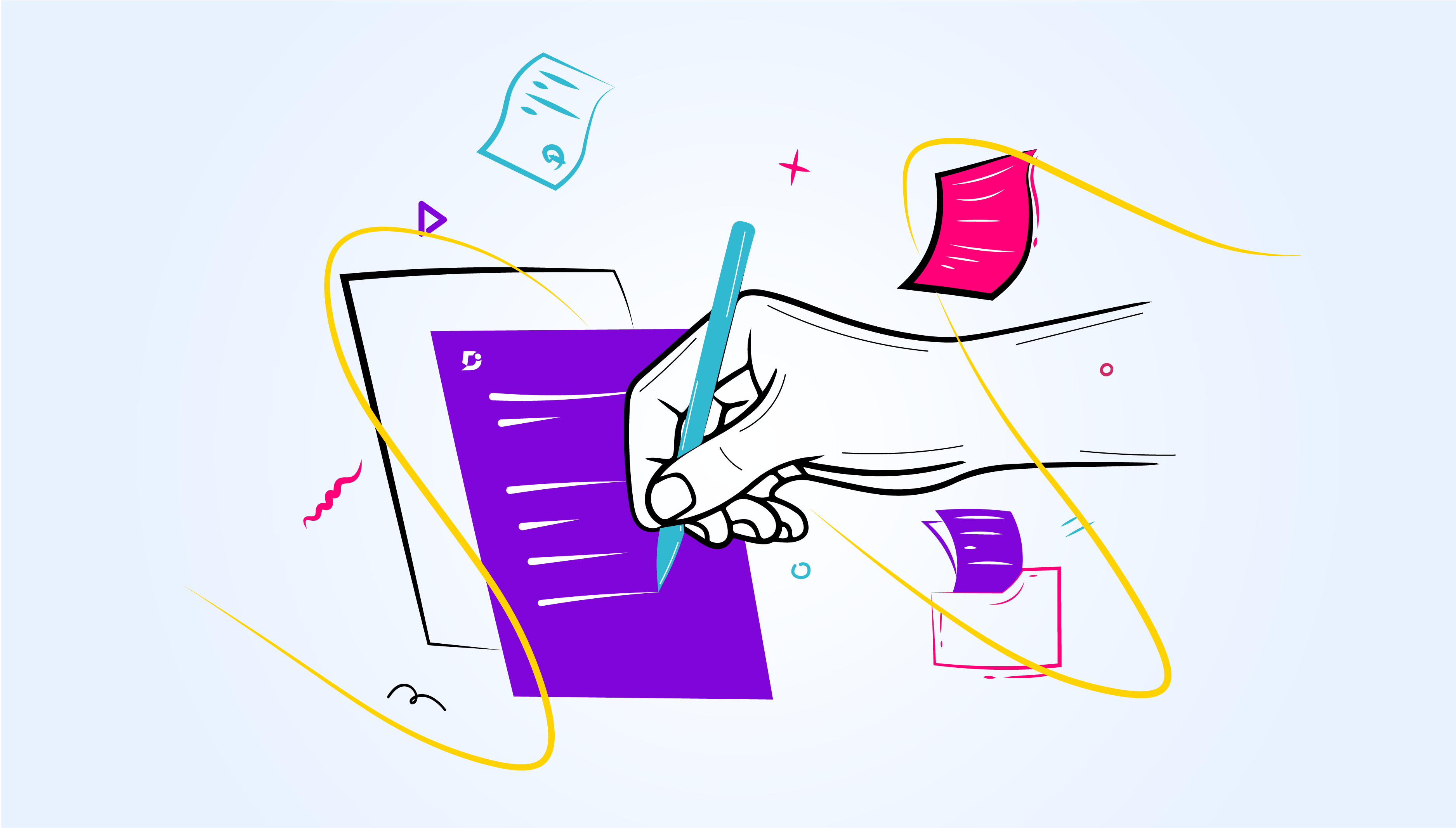Business Requirement Documents (BRD) are usually created to gather all business requirements necessary to build a new application or replace a legacy business application. The BRDs are also drafted for a Request for Proposal (RFP) for a new project. The BRDs provide a solid understanding of requirements across all the project stakeholders. The BRDs lay a foundation stone for project successful execution of the project as all project stakeholders agree on addressing business needs.
What is a business requirement document (BRD)?
It is a document to record the functional, quality, and usability requirements into formats that are easily consumable for future analysis, architectural, and design activities, and most importantly in a format that is understandable by all business stakeholders.
The BRD is designed to take the reader from a high-level understanding of the business processes down to the detailed business requirements. It should capture the following:
- Project summary and background
- Project scope
- Operating model
- Project governance
- Business process model
- Use cases
- Assumptions and constraints
- Prioritized requirements
- Success metrics
Also Read: Introductory guide to process documentation
Components of the business requirement document (BRD)
The main components of the business requirement documents are
Company Overview
The BRDs start with an overview of the company explaining the company’s mission, vision, and business strategy. This section also covers company’s portfolio of products, services, customers, and service delivery. Sometimes company’s business model and operations are also included in the BRDs. This helps the solution provider to get a holistic look at the company they are undertaking the project. In some BRDs, instead of a company overview, an executive summary will be presented.
Project scope
This is the important section of the BRDs that explains the project scope in detail. This provides an outline of what is covered in the project and more importantly what is out of scope. This defines a clear boundary for the project landscape. The consensus needs to be sought out among the project stakeholders about the project scope. The project scope identifies and defines clear business goals along with project high-level outcomes.
Business goals
The business objectives of the projects should be clearly documented to align project stakeholders for successful execution. These goals provide a strategic outcome of the project and detailing the “Why” of this project is required.
Functional and non-functional requirements
This section of the business requirement document talks about the functional and non-functional business requirements. The functional requirements describe essential features that the solution “must-have” to satisfy the project stakeholder needs. The functional requirements are assigned different statuses such as “essential”, “important” and “desirable” and these requirements can be prioritised.
Non-functional requirements are also documented to include any reporting, analytics, and integration requirements.
Project Roadmaps
Project roadmaps contain the schedule for project execution. It includes project milestones and stakeholder meetings along with estimated timelines. It also charts out the dependencies in project activities and contingencies. The rule of thumb is to include 20% buffer time for all activities to manage uncertainties that may arise during project execution.
Stakeholder consultation
The stakeholder consultation meeting includes items that need to be discussed with solution provider after successful project kick-off. This includes
- Business process maps
- Reporting requirements
- Operational requirements
- Service delivery mechanism
- Data privacy
- Service Level Agreements
- Existing business systems
- Business and IT architecture
- Compliance and regulatory requirements
Project risks
This section elaborates on the project risks. Project risks explain the strategic and tactical risks that the project Senior Responsible Officer (SRO) needs to manage during project implementation. The risk plan consists of risk name, risk priority, risk likelihood of occurrence, mitigation strategies, and risk owner.
Infrastructure requirements
For IT and digital transformation projects, infrastructure requirements can be included in the technical section. This includes servers, licensing costs, and so on.
Budgets
Budgets section covers phased/milestone-based payment schedules along with the disbursement amount. The budget needs to cover onboarding cost, stakeholder consultation cost, vendor cost, operation cost, and any non-essential project costs.
Project governance committee is set up to oversee the project execution. This committee includes Senior Responsible Officer (SRO), Project Director, Project Manager, business analysts, and business stakeholders. The committee meets at regular time intervals to ensure smooth project operations. The business analyst usually drafts the business requirement document. The BRDs are verified by a project manager and validated by the project director.
Help customers help themselves instantly with a Knowledge Base!
Book a Demo
Benefits of documenting business requirements
There are so many advantages of drafting the business requirements document including
- A clear understanding of business requirements – Having transparent needs documented and shared among project stakeholders reduces ambiguity and uncertainties
- Improve Flexibility and Reliability – The project risks can be mitigated easily leading to a predictable way to manage project outcomes
- Cost Efficacy – since the requirements are given to solution provider/vendors, it leads to cost saving and helps with price negotiation
- Promotes Transparency – The BRDs fosters transparency leading to improved communications between collaborators and project stakeholders
- Reduces Errors and Mistakes – Since the project requirements are documented upfront, it leads to removing misunderstanding in the implementation of a solution
- Decreases Dependency – The BRDs reduces the dependencies on external and internal stakeholders for project consultation and funding
Samples of Business requirement templates
Typical business requirement document template should contain the following elements
- Introduction
- Executive summary
- Project scope
- Functional
- Non-function requirements
- Stakeholders
- Project plan/roadmap
- Risks and mitigation plans
- Governance
- Budgets
- Additional requirements
Best practices for writing BRDs
The business analyst usually writes business requirement document based on consultation with various project stakeholders. A few best practices are given below
- Identify the Missing Business Context – The business analyst needs to ask a lot of “Why” questions to understand the root of a business problem to ensure the business requirements are validated. This helps to identify a lot of missing business context and understanding dependencies between various project stakeholders
- Capture or create relevant documents on missing context – If any missing business context needs validation, conduct surveys, and document reports
- Create Interactive Documents – The business requirements do not have to be a lengthy document. The content of the BRDs can be interactive with lots of visual elements, architecture diagrams, business process maps, and so on
- Add visual components – Adding diagrams, illustration, charts and other visual elements helps to make the BRDs engaging and easy to understand
- User simple language – Using simple words to articulate the requirements clearly can amplify shared requirements across various stakeholders
- Clear taxonomy – The BRDs usually have a clear template that has good taxonomy. Use those templates for quality assurance purposes
- Insist on collaboration – The project stakeholders need to review the BRDs and validate them before it is shared with solution provider
An intuitive knowledge base software to easily add your content and integrate it with any application. Give Document360 a try!
Get Started


Document Management platform capabilities
A documentation management platform needs to have strong capabilities to make it easier for drafting business requirements.
Intelligent search feature
The search functionality to find the right content based on “keywords” is essential. Since the BRDs are usually long and have lots of attachments, it is crucial to bring relevant content based on the user’s search intent. This helps business analyst and business stakeholders to go through the section of the document and make amendments
User-friendly editors
The document management platform must have an intuitive editor to author and publish content. The editor should provide basic and advanced text formatting capabilities including paragraphs, fonts, styles, tables, headings, and so on. The editor shall have features to insert rich media content including images, videos, and hyperlinks
Category Manager
Since the BRDs have a good structure and taxonomy, the document management platform must have a good category manager to organise content. Category manager should be versatile to re-organise content if necessary
Document scanner
The platform should provide storage to store and search scanned documents. Many platforms support search within pdf articles and have intelligent agents to crawl pdf documents
Workflow automation
Workflow automation is indispensable for ensuring the production of high-quality documents. The BRDs need to go through a stringent review process thus workflow is a key functionality.
Private Documentation and Security
Ability to store documents in private mode and providing limited access privileges to project stakeholders are essential. This helps with data privacy and enforcing project security policies







